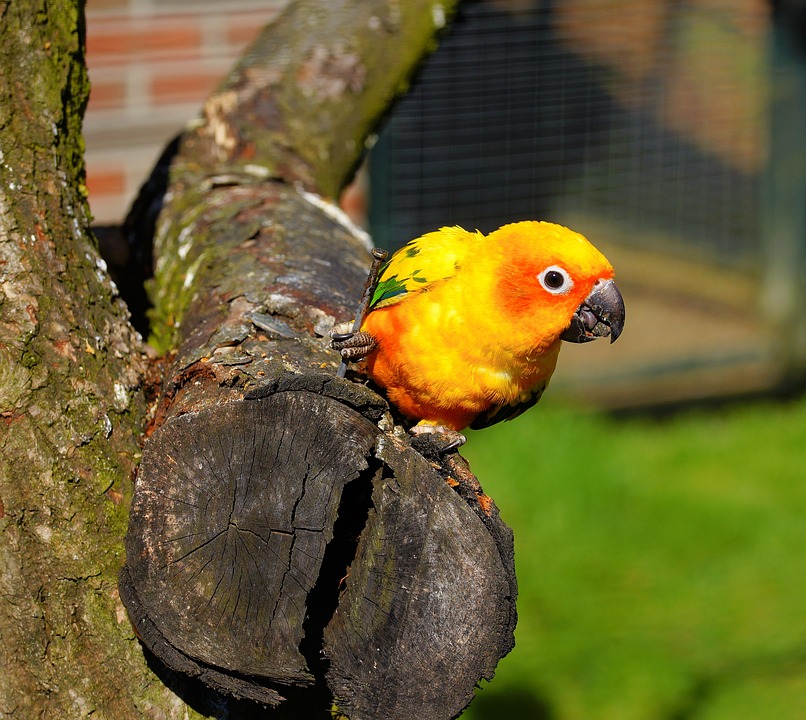Parrots are intelligent and social creatures, and providing them with out-of-cage time is essential for their mental and physical well-being. However, ensuring their safety during these periods is equally important. Creating a bird-safe zone will not only protect your parrot from potential dangers but also allow them to explore and enjoy their freedom. In this article, we will guide you through the process of setting up a bird-safe zone for your parrot and answer some frequently asked questions. Let’s dive in!
Why is a Bird-Safe Zone Important?
Parrots are curious creatures with a knack for exploration. Allowing them out of their cages regularly can provide them with mental stimulation, exercise, and a chance to strengthen their bond with you. However, your home might not be entirely safe for your parrot, as there can be numerous hazards such as toxic plants, electrical wires, open windows, or other pets. Creating a dedicated bird-safe zone ensures your parrot can enjoy their out-of-cage time without any risks.
Selecting the Right Room
Choosing the right room for your parrot’s out-of-cage time is crucial. Ideally, the room should be well-ventilated, free from drafts, and have windows that can be securely closed. Avoid rooms with toxic plants or any potential hazards within the parrot’s reach. The room should also be easily accessible for your parrot to enter and exit without difficulty.
Securing the Perimeter
Before allowing your parrot into the designated room, it’s important to secure the perimeter to prevent any potential escapes or accidents. Here are a few steps to follow:
1. Close all doors and windows: Ensure all doors and windows leading to the outside are securely closed to prevent your parrot from flying away or encountering any dangers.
2. Cover mirrors and reflective surfaces: Parrots can become territorial and may injure themselves when trying to interact with their own reflection. Covering mirrors or other reflective surfaces with a lightweight fabric can eliminate this risk.
3. Remove or secure hazardous items: Carefully inspect the room for any hazardous items such as toxic plants, exposed wires, chemicals, or fragile items that could be knocked over. Either remove these items from the room or secure them to prevent accidents.
4. Seal off potential hiding spots: Parrots are notorious explorers, and they may find their way into small spaces where they can get stuck or injured. Close off any small gaps, holes, or areas where your parrot could hide or get trapped.
Enriching the Environment
To ensure your parrot’s out-of-cage time is both safe and stimulating, it’s essential to enrich the environment with various bird-friendly features. Here are some ideas to consider:
1. Provide perches and climbing structures: Install sturdy perches at different heights to mimic natural tree branches. Consider adding climbing structures or ladders for added exercise and entertainment.
2. Offer stimulating toys: Parrots are intelligent creatures that require mental stimulation. Provide toys, puzzles, and foraging opportunities to keep them engaged during their out-of-cage time.
3. Create a comfortable resting area: Set up a cozy corner with a soft cushion or a comfortable bird bed where your parrot can relax and take short breaks during their exploration.
4. Ensure access to fresh water and food: Place a water bowl and some bird-safe treats or fresh fruits/vegetables within the bird-safe zone. This ensures your parrot stays hydrated and has access to food if they get hungry during their playtime.
Frequently Asked Questions
1. Can I allow my parrot out of its cage in any room of the house?
While it’s possible to allow your parrot out of its cage in any room, it’s crucial to ensure the room is bird-safe. Avoid rooms with potential hazards and secure the perimeter before letting your parrot explore.
2. How can I prevent my parrot from chewing on electrical wires?
Parrots have a natural instinct to chew, so it’s essential to protect them from electrical wires. Use cord covers or run wires through protective tubing to keep them out of your parrot’s reach.
3. Are there any plants I should avoid having in the bird-safe zone?
Yes, some common houseplants can be toxic to parrots. Avoid having plants such as philodendrons, pothos, lilies, or any plants with thorns or berries within reach of your parrot.
4. How often should I supervise my parrot during out-of-cage time?
It’s crucial to supervise your parrot whenever they are out of their cage to ensure their safety. Parrots are curious and can get into trouble quickly, so keeping a close eye on them is necessary.
Creating a bird-safe zone for your parrot during out-of-cage time is essential for their well-being and safety. By selecting the right room, securing the perimeter, and enriching the environment, you can provide your parrot with a stimulating and hazard-free space to explore. Remember to always prioritize your parrot’s safety and enjoy the rewarding experience of bonding with your feathered friend.









